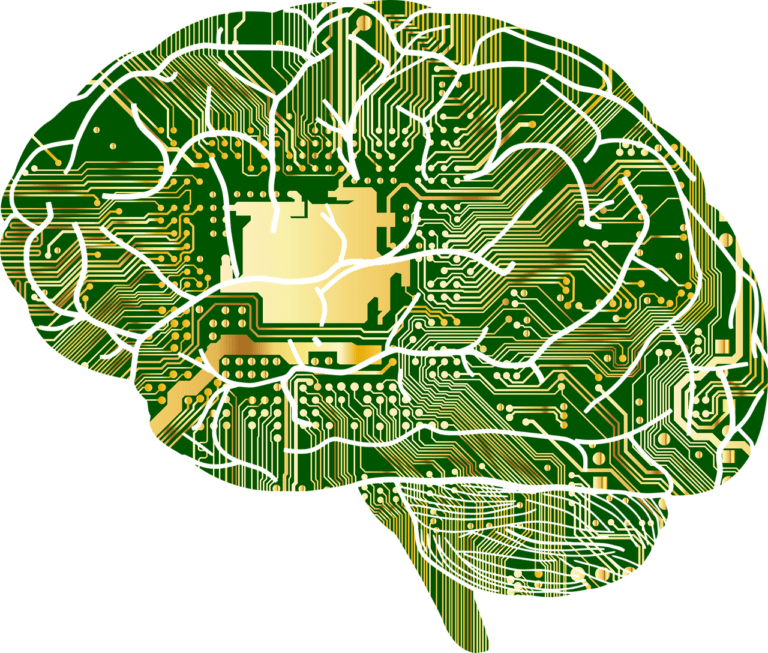Building Resilience in the Workplace Through Innovative Practices
In today's fast-paced and ever-changing work environment, building resilience is crucial for your team's success. You may have already implemented traditional strategies for managing stress and promoting well-being, but have you considered how innovative practices could take your team's resilience to the next level?
It's time to explore new approaches that can not only help your team bounce back from challenges but also thrive in the face of adversity. Let's uncover some cutting-edge techniques and initiatives that can transform the way your team handles stress and uncertainty, ultimately leading to enhanced productivity and well-being.
Key Takeaways
- Resilience is crucial for team success in a fast-paced work environment.
- Mindfulness practices like meditation and deep breathing can help relieve stress and enhance resilience.
- Adapting to change and embracing uncertainty is essential for thriving in a dynamic work environment.
- Creating a supportive work environment through team building activities, mental health support, and open communication can foster resilience and well-being.
The Importance of Resilience
Understanding the importance of resilience in the workplace is pivotal for fostering a strong and adaptive organizational culture. It's essential to recognize that resilience isn't simply an individual trait but can be cultivated and nurtured within the workplace through resilience training and resilience-building strategies. Implementing resilience training programs can equip employees with the skills and mindset necessary to navigate through challenges and setbacks effectively.
By providing employees with the tools to manage stress, adapt to change, and bounce back from adversity, organizations can create a more resilient workforce capable of thriving in dynamic and demanding environments.
Resilience building strategies encompass a range of initiatives aimed at promoting mental and emotional well-being, fostering a supportive work environment, and encouraging open communication. These strategies may include promoting work-life balance, offering wellness programs, providing access to counseling services, and creating opportunities for professional development and growth.
Additionally, leaders play a crucial role in modeling resilience and supporting their teams in developing these crucial skills.
Mindfulness and Stress Management
To further enhance the resilience of your workforce, incorporating mindfulness and stress management techniques can empower employees to effectively navigate challenges and maintain productivity in the face of adversity. Mindfulness practices, such as meditation and deep breathing exercises, are valuable tools for stress relief. Through resilience training, employees can be equipped with mindfulness techniques to cultivate a greater sense of self-awareness and emotional regulation. This enables them to approach high-pressure situations with a calm and composed mindset, fostering a more resilient response to workplace stressors.
Integrating mindfulness and stress management into the workplace not only benefits individual employees but also contributes to a more positive and supportive organizational culture. As employees develop the ability to manage their stress levels, they're better able to collaborate, communicate, and problem-solve effectively, ultimately enhancing team dynamics and overall productivity.
Embracing Change and Adaptability
Adapting to change is a key skill for thriving in today's dynamic work environment, allowing your team to remain agile and responsive to evolving business needs. Change management is crucial in ensuring that your organization can effectively navigate through transitions and emerge stronger. Embracing change and adaptability requires a proactive approach and a supportive organizational culture. Providing adaptability training for your employees can empower them to embrace change with confidence and resilience. This involves equipping them with the necessary tools and strategies to navigate uncertainty and complexity.
| Benefits of Adaptability Training | Employee Empowerment | Enhanced Problem-Solving |
|---|---|---|
| Enables employees to embrace change confidently | Encourages a growth mindset | Enhances creative thinking and innovation |
| Equips employees with the skills to navigate uncertainty | Fosters a culture of resilience | Improves decision-making in ambiguous situations |
| Promotes a positive attitude towards change | Increases employee engagement | Strengthens the ability to adapt to new challenges |
Creating a Supportive Work Environment
To create a supportive work environment, it's important to incorporate team building activities that foster collaboration and trust among colleagues.
Additionally, providing mental health support through resources and initiatives can help employees feel valued and cared for.
Open communication channels also play a crucial role in ensuring that everyone feels heard and understood in the workplace.
Team Building Activities
Engaging in team building activities fosters a supportive work environment by promoting collaboration, trust, and open communication among colleagues. This contributes to a positive workplace culture and enhances overall resilience.
Consider incorporating the following activities to strengthen team dynamics:
- Fun Games: Introducing enjoyable and lighthearted games can break down barriers and create a more relaxed atmosphere, allowing team members to connect on a personal level.
- Trust Exercises: Activities that require colleagues to rely on each other build trust and encourage vulnerability, fostering deeper connections and understanding within the team.
- Collaborative Challenges: Engaging in problem-solving tasks or group challenges encourages teamwork and enhances problem-solving skills, ultimately strengthening the bond between team members.
Implementing these activities can significantly improve team cohesion, communication, and mutual support, contributing to a resilient and thriving workplace environment.
Mental Health Support
Fostering a supportive work environment through mental health support is essential for enhancing team resilience and overall well-being. Incorporating mindfulness techniques into the workplace can significantly benefit employees by reducing stress and enhancing their ability to cope with challenges.
Encouraging mindfulness practices such as meditation and breathing exercises can help employees manage their emotions and improve their overall mental well-being. Additionally, providing access to employee assistance programs can offer professional support and guidance for those facing mental health challenges. These programs can provide confidential counseling services, resources for managing stress, and assistance in addressing personal or work-related issues.
Open Communication Channels
By establishing open communication channels, a supportive work environment can be cultivated, fostering collaboration and trust among team members. This is crucial for building resilience within the workplace. Improved feedback and active listening are key components of effective communication.
Here's how to achieve this:
- Encourage open dialogue: Create opportunities for team members to share their thoughts, concerns, and ideas in a safe and non-judgmental space.
- Provide constructive feedback: Offer specific and actionable feedback to help employees understand their strengths and areas for improvement.
- Practice active listening: Show genuine interest in what others have to say, ask clarifying questions, and demonstrate empathy to foster a culture of understanding and support.
Flexible Work Arrangements
You can enhance your organization's resilience by embracing flexible work arrangements.
Remote work benefits, such as increased productivity and reduced commuting stress, can positively impact your team's performance and well-being.
Remote Work Benefits
Flexible work arrangements offer employees the opportunity to manage their work schedules in a way that best suits their personal and professional needs. As remote work becomes increasingly prevalent, it's important to understand the benefits it brings to both employees and organizations.
Here are some key advantages of remote work:
- Improved Work-Life Balance: Remote work allows employees to better juggle personal and professional responsibilities, leading to increased job satisfaction and overall well-being.
- Expanded Talent Pool: By embracing remote work, organizations can tap into a larger talent pool, transcending geographical boundaries and accessing a diverse range of skills and perspectives.
- Cost Savings: Remote work can lead to reduced overhead costs for organizations and lower commuting expenses for employees, contributing to financial savings and sustainability efforts.
Remote collaboration and virtual team building are facilitated through remote work, fostering a more connected and resilient workforce.
Schedule Flexibility Impact
As remote work continues to gain popularity, the impact of schedule flexibility on employee productivity and satisfaction is increasingly recognized as a crucial aspect of flexible work arrangements. Providing employees with the flexibility to manage their work schedules not only fosters a sense of autonomy and control but also has a significant impact on their productivity and satisfaction levels.
When employees can adapt their work hours to better suit their personal lives, they're more likely to experience a morale boost, leading to improved work performance and overall job satisfaction. This flexibility allows individuals to better balance their professional and personal responsibilities, ultimately resulting in higher levels of job satisfaction and commitment to their roles.
Work-Life Balance Advantages
Acknowledging the advantages of work-life balance through flexible work arrangements can significantly enhance employee well-being and overall productivity. Embracing work-life integration fosters a healthier, more satisfied workforce, ultimately benefiting both employees and the organization as a whole.
Here are some key advantages of flexible work arrangements:
- Work-Life Integration: Flexible schedules and remote work options empower employees to better integrate their professional and personal lives, reducing stress and improving overall well-being.
- Productivity Benefits: By offering flexibility, employees can better balance their personal commitments with work responsibilities, leading to increased focus and productivity during working hours.
- Holistic Wellness and Employee Satisfaction: Flexible work arrangements demonstrate a commitment to employee well-being, fostering higher job satisfaction and loyalty, which in turn contributes to a more positive and productive work environment.
Embracing these advantages can lead to a more resilient and thriving workplace.
Empowering Leadership and Communication
Fostering a culture of open communication and empowering leadership is essential for building resilience in the workplace. Effective communication creates clarity, alignment, and trust, while empowering leadership encourages autonomy, innovation, and accountability. Together, these elements form a strong foundation for navigating challenges and fostering a resilient workforce.
| Empowering Leadership | Effective Communication |
|---|---|
| Encourage autonomy and decision-making | Promote active listening |
| Provide support and resources for growth | Foster transparency |
| Recognize and celebrate achievements | Clarify expectations and goals |
| Embrace diversity and inclusivity | Encourage feedback and dialogue |
| Lead by example and inspire others | Resolve conflicts constructively |
Empowering leadership is about equipping employees with the tools and confidence to tackle obstacles, make decisions, and contribute meaningfully to the organization. Effective communication ensures that information flows freely, enabling teams to adapt quickly, collaborate effectively, and stay informed. By prioritizing these aspects, leaders can nurture a resilient workplace where individuals feel empowered, connected, and capable of overcoming adversity.
Learning and Development Opportunities
To enhance the resilience of your workforce, providing accessible and relevant learning and development opportunities is crucial for fostering continuous growth and adaptability within your organization. Here are three key ways to maximize the impact of learning and development initiatives:
- Professional Development: Encourage employees to pursue professional development opportunities that align with their career aspirations and the strategic goals of the organization. This may include attending industry conferences, enrolling in online courses, or participating in mentoring programs.
- Skills Training: Offer targeted skills training programs to equip employees with the competencies needed to excel in their current roles and prepare for future responsibilities. This could encompass technical skills workshops, leadership training, or cross-functional job rotations.
- Personalized Learning Paths: Implement personalized learning paths that cater to individual employee needs and preferences. Utilize assessments and feedback mechanisms to identify skill gaps and tailor learning experiences accordingly, whether through e-learning platforms, coaching sessions, or on-the-job training opportunities.
Employee Well-being Initiatives
You can enhance employee well-being by implementing mental health support, work-life balance programs, and health and wellness initiatives.
These initiatives not only benefit the individual employee but also contribute to a more resilient and productive workforce.
Mental Health Support
Incorporating comprehensive mental health support initiatives is essential for fostering a resilient and productive workplace environment. Prioritizing mental health awareness and implementing effective employee support systems can significantly contribute to overall well-being and performance.
Here are three key strategies for promoting mental health support in the workplace:
- Provide access to mental health resources, such as counseling services and support hotlines, to ensure employees have the necessary tools to address their mental health needs.
- Offer mental health training and workshops to educate employees and managers about recognizing signs of distress, managing stress, and creating a supportive work environment.
- Establish open communication channels where employees feel comfortable discussing mental health concerns and seeking assistance without fear of stigma or discrimination.
Work-Life Balance Programs
Prioritizing mental health support in the workplace lays the foundation for implementing effective work-life balance programs and employee well-being initiatives.
Flexible scheduling allows employees to manage personal and professional responsibilities, resulting in reduced stress and increased job satisfaction.
Wellness programs, such as yoga classes and meditation sessions, contribute to overall employee well-being and work-life balance.
Employee support initiatives, such as access to counseling services and self-care workshops, further enhance the resilience of the workforce.
By offering these programs, organizations demonstrate their commitment to supporting employees in achieving a harmonious balance between work and personal life.
Ultimately, work-life balance programs not only benefit employees but also contribute to a more productive and engaged workforce.
These initiatives are essential for creating a thriving workplace where employees feel valued and supported.
Health and Wellness Initiatives
To enhance employee well-being and resilience in the workplace, implementing comprehensive health and wellness initiatives is essential. These initiatives not only promote physical and mental health but also contribute to a more engaged and productive workforce.
Here are three key ways health and wellness initiatives can benefit your organization:
- Improved Employee Engagement: Health and wellness initiatives demonstrate that your organization values its employees' well-being, fostering a sense of trust and loyalty. This, in turn, leads to higher levels of employee engagement and satisfaction.
- Enhanced Productivity: When employees are healthy and supported in their well-being, they're better able to focus, maintain energy levels, and perform at their best. This results in increased productivity and overall performance.
- Reduced Absenteeism: By prioritizing employee health, organizations can proactively address health issues, ultimately reducing absenteeism and the associated productivity losses.
Implementing these initiatives can significantly contribute to a resilient and thriving workplace.
Team Building and Collaboration
Encourage open communication and foster a culture of trust and collaboration to strengthen team dynamics and build resilience in the workplace.
Team bonding and problem-solving activities are essential for enhancing collaboration and fostering a sense of unity among team members. When teams engage in activities that require problem-solving, it allows individuals to leverage their unique skills and perspectives, building a foundation for effective collaboration.
Additionally, communication plays a pivotal role in trust building. Encouraging open and honest communication channels within the team creates an environment where team members feel heard and valued. This, in turn, fosters trust and strengthens the overall team dynamic.
To further enhance team building and collaboration, consider organizing regular team-building activities that focus on fostering strong interpersonal relationships and teamwork. These activities can range from outdoor team-building exercises to group problem-solving tasks.
Moreover, providing opportunities for cross-departmental collaboration and encouraging knowledge sharing can significantly contribute to building resilience within the teams. By creating an environment where collaboration and teamwork are valued, you can lay the foundation for a resilient and high-performing team.
Measuring and Evaluating Resilience Efforts
In order to effectively gauge the impact of team building and collaboration on resilience in the workplace, it's essential to develop measurable criteria and evaluation methods for assessing the success of these efforts. When it comes to resilience assessment and performance evaluation, the following steps can be instrumental in measuring and evaluating resilience efforts:
- Define Clear Objectives: Establish specific goals and desired outcomes for the resilience-building initiatives. This could include improved employee engagement, reduced stress levels, and enhanced problem-solving abilities.
- Implement Surveys and Feedback Mechanisms: Utilize surveys and feedback tools to gather insights from employees regarding their perceived levels of resilience and how they've been influenced by the implemented initiatives. This can provide valuable qualitative data for evaluation.
- Analyze Key Performance Indicators (KPIs): Identify relevant KPIs such as absenteeism rates, turnover, and productivity levels to measure the impact of resilience-building efforts on overall organizational performance.
Conclusion
In conclusion, building resilience in the workplace is crucial for navigating the challenges of today's fast-paced and ever-changing environment. By implementing innovative practices such as mindfulness, flexible work arrangements, and employee well-being initiatives, you can create a supportive and adaptable work culture.
But how can you measure the impact of these efforts on your team's resilience? It's time to assess and evaluate the effectiveness of these initiatives to ensure long-term success.







